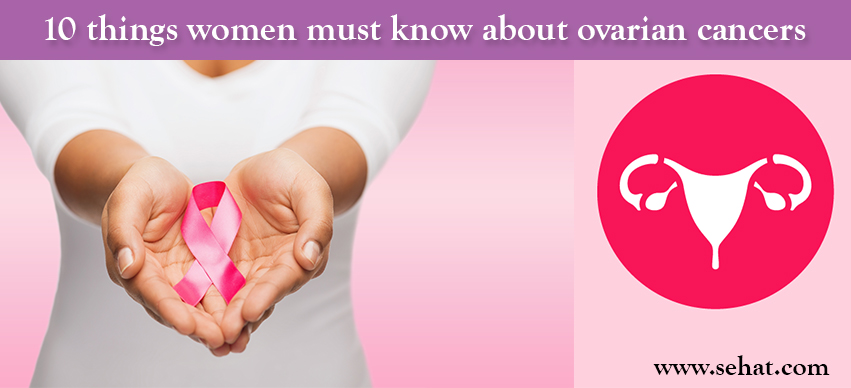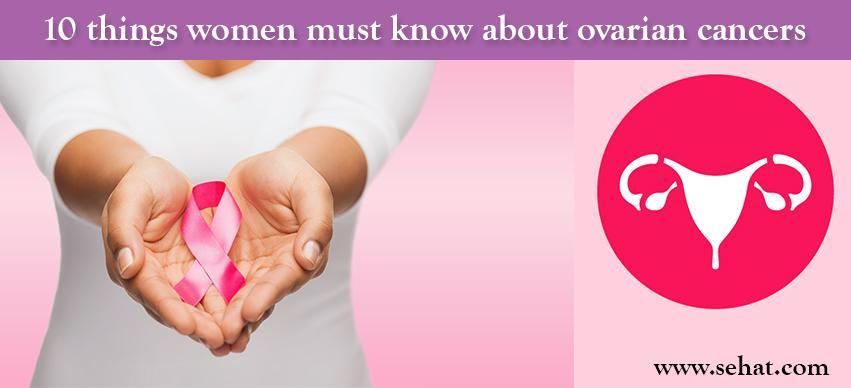Tips To Choose The Best Hospital Uniforms
6 Min Read


Of all the types of cancers that we get to see now, ovarian cancer is the most dangerous and sometimes life threatening too. Detection and treatment in the early stages goes a long way in eliminating the disease totally. Day-by-day, more women are falling prey to various types of ovarian cancers and sehat.com Gynaecologists suggest that information about the symptoms, diagnosis and treatment can help women spot the changes in their bodies and get in touch with their healthcare provider.
We have listed down the ten most important things women must know about ovarian cancers. Read on and spread the information.
1. The biggest truth about ovarian cancers is that 90% of them are totally curable. Unless they are detected in the last stages, most of such cancers can be treated with medication and chemotherapy. In the earlier days, cancer meant slow death because medicine wasn’t that advanced. But now, there is a cure for everything and you need to be strong and patient to endure all the pain and get rid of the cancer.
2. Women health problems after 40 carry a higher risk of contracting ovarian cancers. They might have been healthy all through their life but a single cancerous cell is enough to spread it to the reproductive system. It is important that women who reach menopause get themselves checked every now and then to prevent cancers and also diagnose it in the early stage if at all they have been affected.
3. Symptoms like frequent urination, bloating, abdomen pain, indigestion, gas, abnormal bleeding and back pain are commonly seen in women with ovarian cancers. On the flip side, these symptoms do not necessarily mean cancer. They can be due to menopause, hormonal imbalances, gastric disorders etc. When something is bothering you, it is advisable that you get it diagnosed by a gynaecologist.
4. Women who haven’t breastfed their babies are more likely to develop ovarian cancer after they touch the menopausal stage. Breastfeeding reduces ovulation and the lesser the woman ovulates, the better her ovaries are. Similarly, women who have their uteruses removed due to complications after pregnancy have a zero risk of ovarian and fallopian tube disorders.
5. There is no way to prevent ovarian cancers. Though a special surgery called the prophylactic oophorectomy can be performed to remove cancerous cells in women whose mothers or grandmothers have suffered from ovarian cancers, there are plenty of side-effects to it. Before resorting to such surgeries a woman should weigh the options properly and get educated about the treatment.
6. Ovarian cancers also have the risk of spreading to the breast and trigger breast cancer too. Similarly, vice-versa too. Once a cancer cell is found in the body, extreme caution should be exercised to identify such cells in other parts of the body and cure them.
7. Treating ovarian cancer takes time. Antibiotics, chemotherapy, hormone therapy, radiation and adequate rest are the key treatments offered to women. Depending upon the type of cancer and its intensity, treatment is modified for the patient. Before you start getting treated, be sure of the side effects, health implications and relief options available. Talking to your family and getting their support helps you in the long run.
8. Post cancer therapy, you should still keep monitoring yourself and be taking a lot of care. Staying active, getting enough exercise, taking medication on time, eating a fibre-rich diet and drinking plenty of water are the pre-requisites to a faster healing.
9. Maintaining a healthy height-weight ratio prevents other complications that crop up from ovarian cancers. Hitting the gym or practising yoga can help you stay in shape.
10. Sunlight and cancer have a very strange correlation. Too much exposure to harsh sunlight can bring back cancer into the body. Ultraviolet radiation from the sun can cause harm and slow down the healing process. Always use a sunscreen and stay away from broad daylight until you get back to complete normalcy.